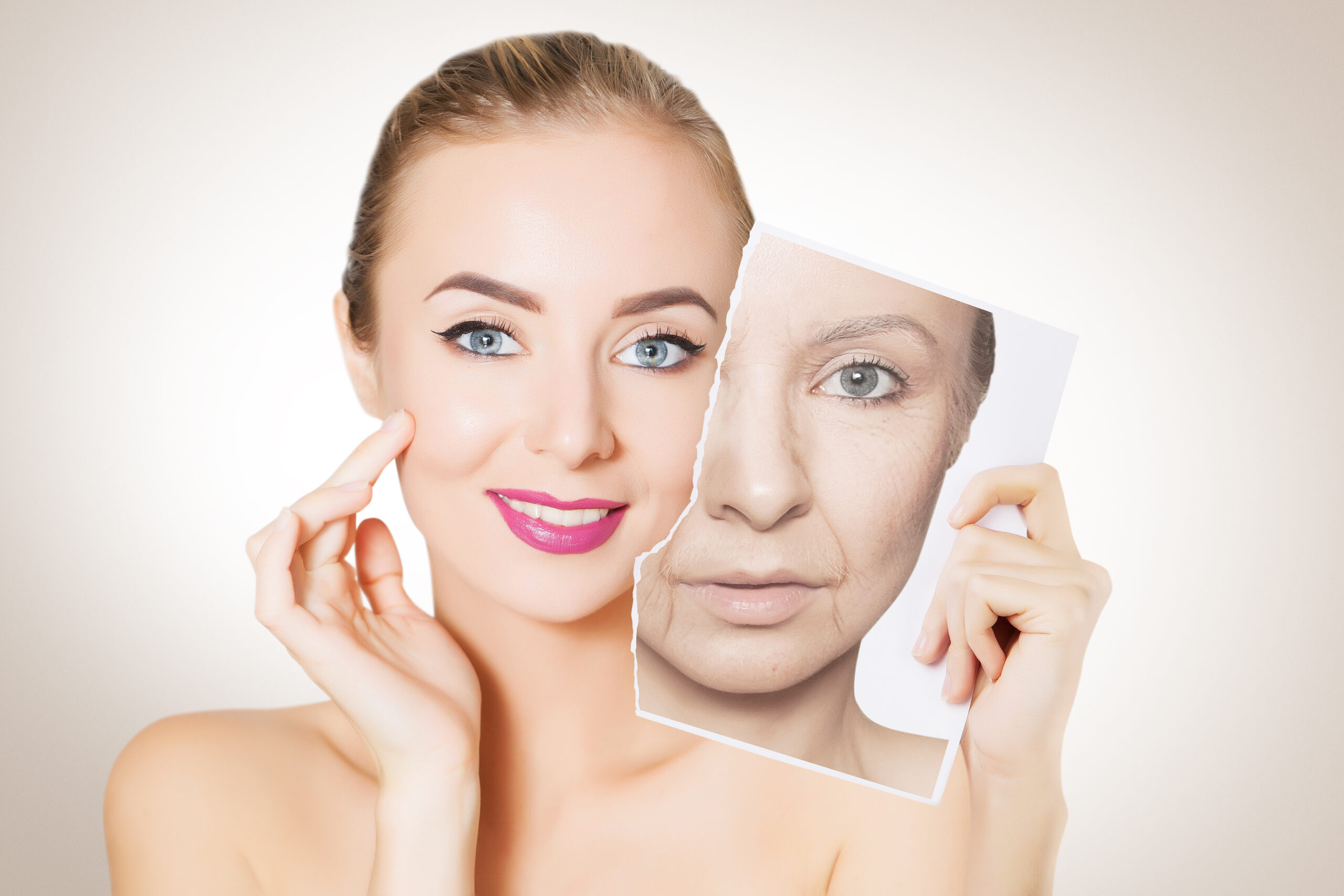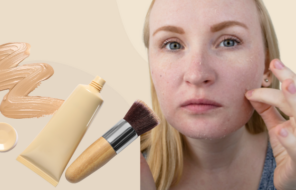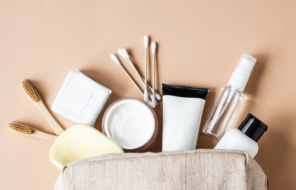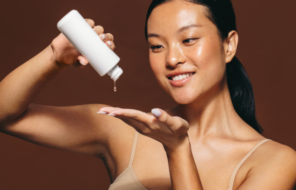Different anti-aging skincare ingredients work differently, and the secret to truly getting the skin to look smoother and a little more youthful is knowing how to combine them into one epic smoothing, rebuilding and protecting routine.
In this article, we go into detail about everything to do with anti-aging skin care, including what skin aging is and what causes it in the first place. Only once you understand the causes will you understand how truly good anti-aging skin care works. We explain what the best anti-aging skincare ingredients are.
We give suggestions for how to care for your skin at different ages and with different skin types, and to cap things off I mapped out the ultimate anti-aging skincare routine to help get rid of wrinkles (or at least prevent them). It’s a comprehensive routine that puts the different kinds of products together in order to maximize the effectiveness of each one of them.
To finish things, I give a few extra lifestyle tips that’ll help you feel youthful, and I end on what I hope is a note that will keep you practicing self-love!
What Is Skin Aging?
There is a combination of things women are usually referring to when they express their concern about skin aging, and these are also the things skincare companies aim to solve with their products. The first, of course, is wrinkles – the lines, folds, and ridges that start appearing in our face as we age, and as our skin struggles to reproduce collagen and elastin.
One day you look in the mirror and see that those folds that show up when you smile or frown do not fully go away once your face relaxes. A little later on, this loss of elastin leads to a more drastic loss of tone that leads to the skin sagging, especially around the jawline and at the neck.
Other symptoms considered part of skin aging include increased fragility, dryness, and having thinner, more transparent skin. Hyperpigmentation is also considered part of skin aging.
What Causes Skin Aging?
The bulk of skin aging has to do with our genetics, plain and simple. This kind of aging is known as “intrinsic aging.” Some people’s skin continues to produce collagen and elastin into a later age just because they won the genetic lottery, and unfortunately there is nothing that topical anti-aging skincare products can do about that.
We cannot do much about our body’s natural aging process, and because of that I don’t think there is any purpose worrying about that. You can certainly turn to more dramatic procedures like injections and fillers, but for many people that seems extreme.
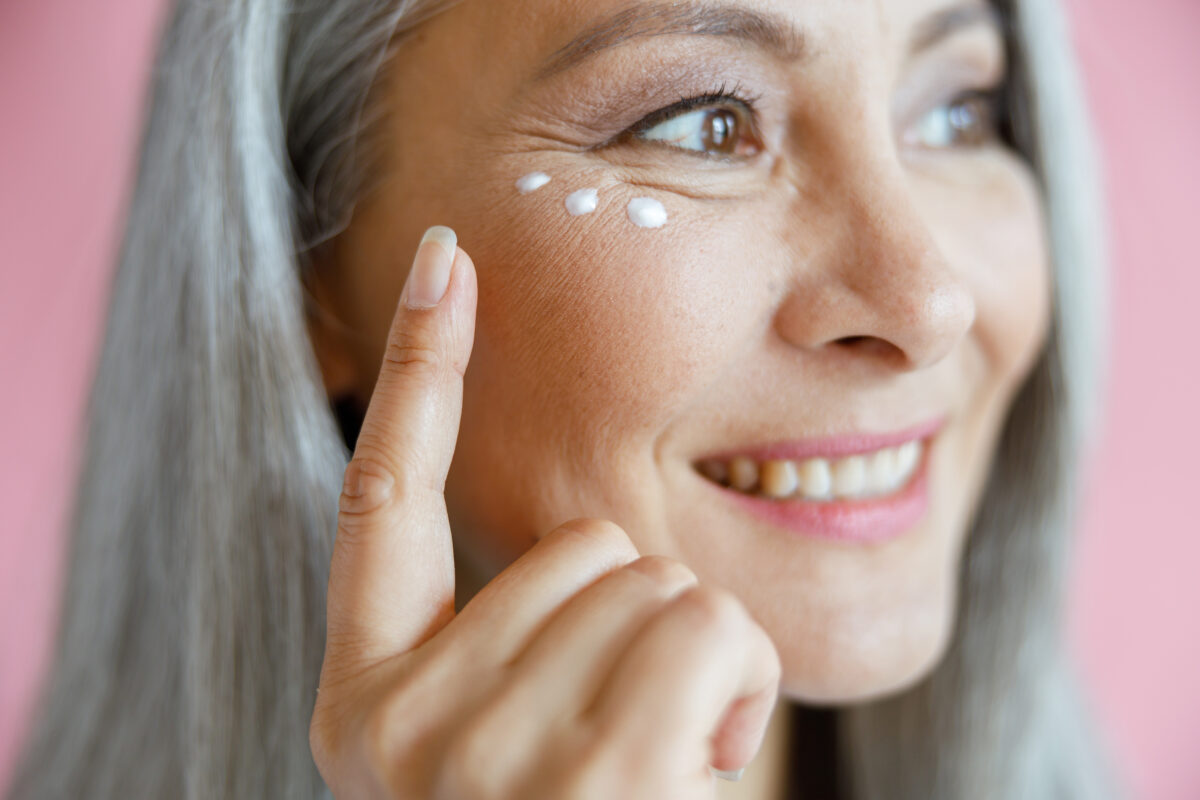
Because of that, I’ll focus the article on “extrinsic aging,” which I mostly refer to as “premature aging” – the signs of the aging process that are caused by environmental factors, and not because of genetics or internal processes. These are also the parts of the aging process that can be prevented and mitigated with the help of topical anti-aging products.
The primary cause of extrinsic aging is likely to be free radical damage, which mostly comes to us courtesy of the sun as well as from various kinds of pollution. UV radiation from sun exposure leads to damage of our skin’s elasticity and collagen fibers and results in wrinkles, sagging, and uneven skin tone. Other forms of free radical damage come from pollutants in our environment – like cigarette smoke, smog, and other toxins.
Secondly, our lifestyle choices can impact our skin’s health and pre-mature aging of the skin. Factors like smoking, excessive alcohol consumption, poor diet, and lack of sleep can all contribute to fine lines and a less youthful appearance.
Keeping the skin in an overall healthy condition is a key way of preventing unnecessary inflammation and thereby keeping the skin youthful for longer.
Best Anti-Aging Ingredients to Add to Your Routine
So which are the best anti-aging skincare ingredients that are excellent at removing wrinkles and mitigating signs of skin aging?
Resurfacers and Regenerators
Skin resurfacers fall into two camps. In the first camp we have the chemical exfoliants or keratolytic agents, like alpha hydroxy acids (glycolic or lactic acid, for example), and salicylic acid. By removing dead skin, the skin is better able to absorb other beneficial ingredients, and cell turnover is improved.
Then we have vitamin A derivatives, which normally show up in topical anti-aging skin care as retinol. Retinol is not an exfoliant, but it does help with cell turnover. Retinol regulates cell reproduction and promotes cell regeneration in the skin, including the regeneration of collagen and elastin.
Antioxidants
One of the bigger secrets to fine line prevention is antioxidants, the benevolent ingredients that protect us from free radical damage. Free radicals are incomplete molecules that steal electrons and lead to a destructive chain reaction called “oxidation” – that’s right, the same oxidation that leads to rust or faded car paint.
There are thousands if not tens of thousands of different antioxidant sources used in anti-aging skin care, since antioxidants occur everywhere naturally. Some antioxidants are oil-soluble, while others are water-soluble, so the best anti-aging products will include a diverse collection of antioxidants instead of relying on just one or two.
The most commonly used antioxidant ingredient is vitamin E, since it is well researched. In addition to protecting the skin from free radical damage it also stabilizes cosmetic formulas.
Other proven antioxidants that often show up in anti-aging skincare formulations include vitamin C, alpha-lipoic acid, coenzyme Q10, beta-carotene, ferulic acid, and resveratrol.

Additionally, there are a ton of plant extracts and oils that are naturally rich in antioxidants, including the antioxidants I’ve listed previously. For example, sunflower oil contains a ton of vitamin E, while calendula extract is extremely rich in beta-carotene.
Other extracts and oils rich in antioxidants that you will see show up in anti-aging skin care include green tea extract, calendula extract, rosehip seed oil, argan oil, licorice root extract, and a ton more.
It’s also worth mentioning that cosmetic companies are often looking for the next big natural extract to promote as the most antioxidant thing ever – usually these claims are not worth falling for, as the best anti-aging products would include diverse sources of antioxidants both synthesized and from extracts and oils.
Anti-Inflammatories
As I mentioned earlier, a second theory of skin aging posits that it happens as a result of inflammation, and that by preventing irritation in the skin it is also possible to slow down the process of extrinsic aging.
Regardless of whether this is true or not, anti-inflammatories are a fabulous addition to one’s anti-aging skincare routine, as they usually also have skin firming effects that can momentarily get rid of wrinkles, or at least make them look smaller. Additionally, most anti-inflammatories also act as antioxidants, so no matter what, they will definitely help prevent skin aging to some extent!
Some common anti-inflammatories that also have a skin-firming effect include cornflower extract and caffeine. These ingredients often show up in eye products, since they can help reduce the look of under-eye bags.
Willow bark extract and green tea extract are both wonderful skin soothers that also have antioxidant effects. Willow bark extract is an especially great anti-aging ingredient for those with acne-prone skin, since it multi-tasks by reducing acne-related redness.
Hydrators and Humectants
Hydrators and humectants offer a quick and easy option for improving the look of the skin, not to mention its feel, while in the long term they help protect the skin from irritation and inflammation that can speed up skin aging. When we’re young, humectants like glycerin and hyaluronic acid occur in our skin naturally, but they become depleted as we age.
Humectants work by penetrating into the top layer of the skin, and then absorbing moisture from the air as well as the products they come in, and bringing it into the skin. This instantly saturates the top layer of skin with water, plumping it up and making wrinkles and fine lines less visible. It also turns that top layer of the skin into a better barrier that is more resistant to damaging inflammation.
Hyaluronic acid, in particular, stands out. It is a superstar humectant, primarily because it is able to hold a massive quantity of water, especially when compared to other humectants. This means that in the short term it plumps up the skin significantly.
There are many other excellent humectants you will see used in anti-aging skin care, including panthenol (pro-vitamin B5), betaine, propylene glycol, sodium PCA, sodium lactate, and in recent years also sugar alcohols like xylitol and sorbitol. Proteins and amino-acids also have a moisture-binding effect on the skin when applied topically.
It is very important that humectants be paired with occlusive and emollient ingredients (especially botanical oils and ceramides), which will work to create a light barrier over the skin to prevent any moisture from evaporating and will also prevent nasties like bacteria from getting into the skin. In anti-aging serums and moisturizers, you can almost always trust that this pairing is there.
Collagen Regenerators
One claim that cosmetics companies often make about their anti-aging skin care is that one (or a few) of the ingredients in their formula promotes collagen or elastin production in the skin. More often than not this is a claim that has not been sufficiently substantiated by scientific research.
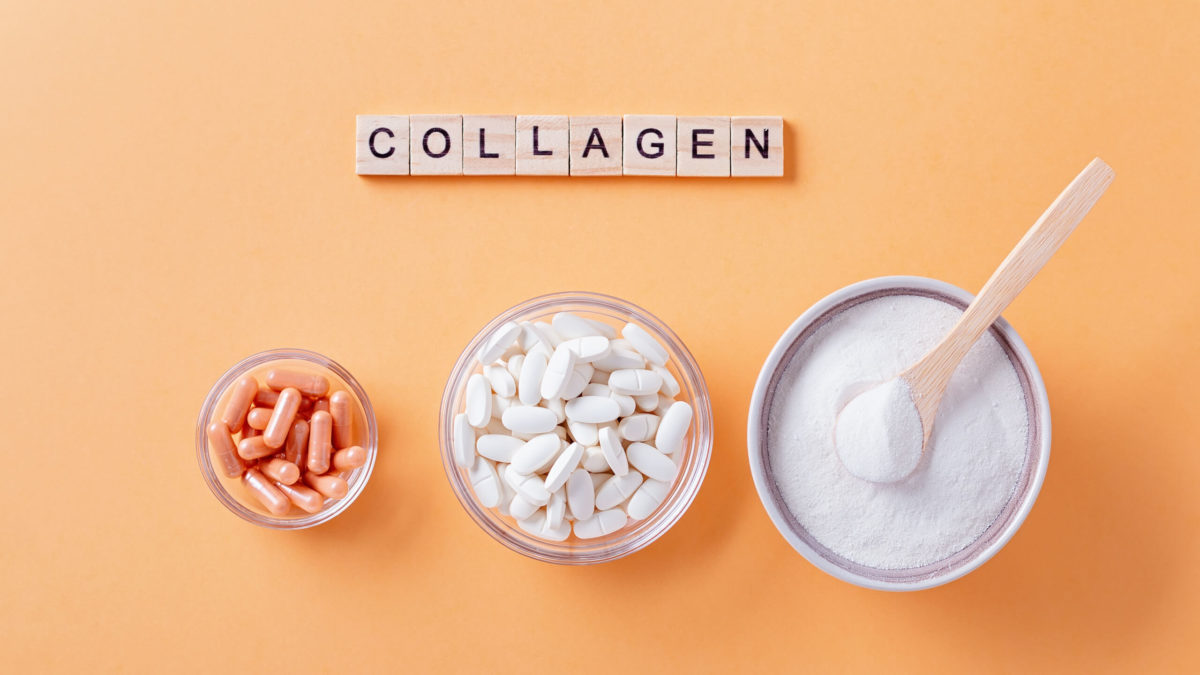
The FDA will occasionally send warning letters to companies making these kinds of claims, since they are considered “drug claims” and therefore cannot be made in relation to mere cosmetics. However, that is not to say that these companies are just making things up – it just means that the research they’ve done is not yet enough to prove that these anti-aging ingredients work.
Most frequently this claim comes up for peptides, which are short chains of amino acids combined by a peptide bond. In our skin, when collagen starts breaking down it naturally forms peptides, which signal that new collagen needs to be produced since the skin has been damaged. The logic behind using peptides in skin care is that once applied, they will trick the skin into producing more collagen.
However, whether peptides in an anti-aging cream are actually capable of doing that in the same way as naturally occurring peptides is not something that has been conclusively proven.
Reading research (that is usually done by the companies trying to sell the product) and reviews, it does seem that serums with peptides do have the ability to strengthen and smooth the skin out somewhat. They can be a worthwhile addition to a comprehensive anti-aging skincare routine, especially if you’re already using sunscreen, exfoliants, vitamin A, and antioxidants, but contrary to what some brands claim, peptides alone are not the miracle to remove wrinkles.
Plant stem cells are yet another type of ingredients that will supposedly magically get rid of wrinkles by acting like human stem cells to trigger cell renewal. This time it is actually pretty clear that this is all buzz and marketing, as there is absolutely no good research or proof showing that topical plan stem cells actually work like that, and it is why we haven’t listed any stem cell products on our list of the best anti-aging skin care products.
When Should You Start an Anti-Aging Skincare Routine?
The truth is most of us start using anti-aging skin care at a much younger age than we imagine. I suspect I first started using anti-aging skin care when I was around 2 or three years old. Does that sound wild? If you think about it, you might realize that the same is true for you.
As I’ve previously mentioned, the most powerful anti-aging product is sunscreen, so if your mother slathered you in it in the summers when you were a child then that counts as anti-aging skin care. Thinking about preventing premature aging with skin care is reasonable at any age, although that is not to say that anyone needs to obsess over it.
There can be plenty of benefits to introducing various anti-aging ingredients into your routine, no matter your age, but I will give some advice based on each decade of one’s life.
Anti-Aging Skin Care in the Teens and Early Twenties
When we’re teenagers, chances are our primary skin concerns have to do with oiliness and acne, since these are the years when hormones go wild, and breakouts often start popping up.
While treating primary skin concerns and keeping the skin balanced and healthy should be the primary focus of a skincare routine in the teen years, there is room for a youth-preserving touch. After all, any damage the skin accumulates over the teens and early twenties can show up later on in the late twenties and early thirties.
- Teenagers should definitely use an SPF of at least 30 in the daytime, both to prevent sunburn and skin cancer, but also to prevent the sun’s harmful rays from breaking down the skin. The SPF can come from a lightweight, oil-free moisturizer or from a dedicated sunscreen.
- Another useful way for teenagers to use anti-aging products would be in the form of antioxidants that double as anti-inflammatories. Antioxidant-rich ingredients like green tea or willow bark extracts stop free radical damage, which causes premature aging in the skin, but they also act as soothing and healing agents, which can be very useful if one’s skin is irritated from breakouts.
- Hydrating toners or light moisturizers for oily or combination skin that also contain these kinds of ingredients will do a great job of keeping the skin healthy on all fronts.
- Young people with dry skin should use a heavier moisturizer, of course, but look for the same skin-fortifying and protecting ingredients.
- Additionally, teens and those in their early twenties still suffering from breakouts might find themselves getting an anti-aging touch from acne-fighting skin resurfacers like salicylic acid or vitamin A.
Anti-Aging Skin Care in the Mid-Twenties to Mid-Thirties
Once we hit our mid-twenties it’s time to consider aging prevention just slightly more head-on.
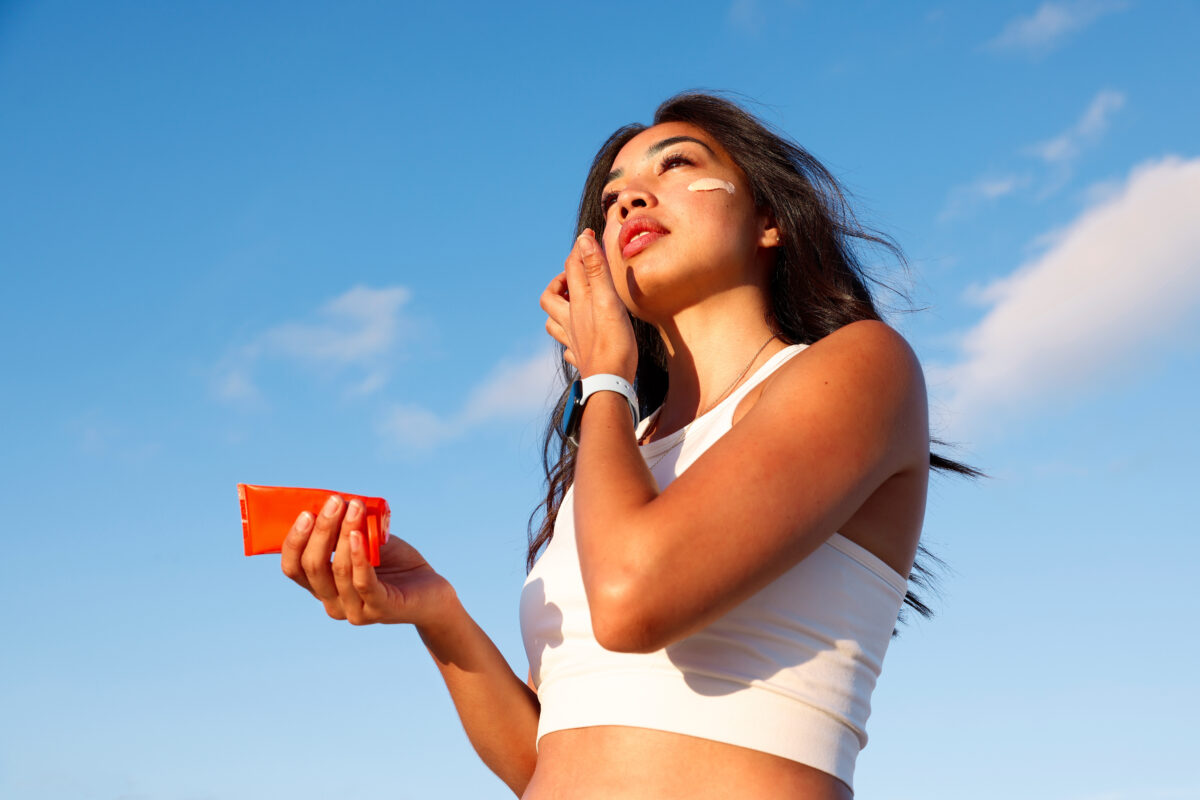
- In addition to still using sunscreen, keeping the skin well hydrated should become a primary concern, so definitely use a moisturizing product, either in the form of a serum or moisturizer.
- Your serum or moisturizer should also include a high amount of antioxidants, as these are some of the best ingredients for preventing free radicals from taking their toll on your skin and speeding its aging. After all, this is the age where you want to focus on maintaining what you already have.
- Regular exfoliation also becomes more important at this age, in order to aid your moisturizers and serums penetrating into the skin, and in order to keep your cell turnover rate steady. You can also choose to start using retinol, but it’s not quite so important yet unless you’re also dealing with acne, scarring, or hyperpigmentation. As always, chemical exfoliants are a better choice than physical ones.
- If you have some specific concerns regarding your eye area, you can also consider adding an eye cream to your routine, but your serum or moisturizer will likely suffice for keeping it moisturized and protected from free radical damage.
- At this age you are also not quite in need of collagen building anti-aging ingredients, since your skin shouldn’t have started to sag yet! The super expensive products that contain all different kinds of peptides will not do much to help your skin.
Anti-Aging Skin Care in the Mid-Thirties to Late Forties
At this age range it is possible that you have kept up a perfect anti-aging skincare routine filled with antioxidants and regular exfoliation, and that you have been using sunscreen religiously. It’s also possible that you’ve only tuned in to the skincare world now.
Either way, the sunscreen, exfoliation, and antioxidant serums and creams have not lost any of their importance, so they should either remain part of your skincare routine, or perhaps it is time to introduce them.
- You will likely notice your skin beginning to get drier, so you might want to switch to a more nourishing moisturizer formula.
- This is the age range when the skin starts to lose significant amounts of collagen, and when fine lines and wrinkles really show up. Because of that, this is also the time when you should definitely add the strongest of skin restorers to your routine: vitamin A, either in the form of retinol or prescription tretinoin.
- For an extra boost, you can make sure to pair it with other skin-restoring ingredients, like vitamin C or niacinamide, which may have already been part of your routine, since they also have antioxidant and skin-brightening functions.
- You might also want to throw in an anti-aging eye cream while you’re at it!
Anti-Aging Skin Care in the Fifties and Up
There shouldn’t be a big change between your anti-aging skincare routine in your forties and your skincare routine in your fifties or even later in your seventies. Hopefully, up until now you have been taking great care of your skin!
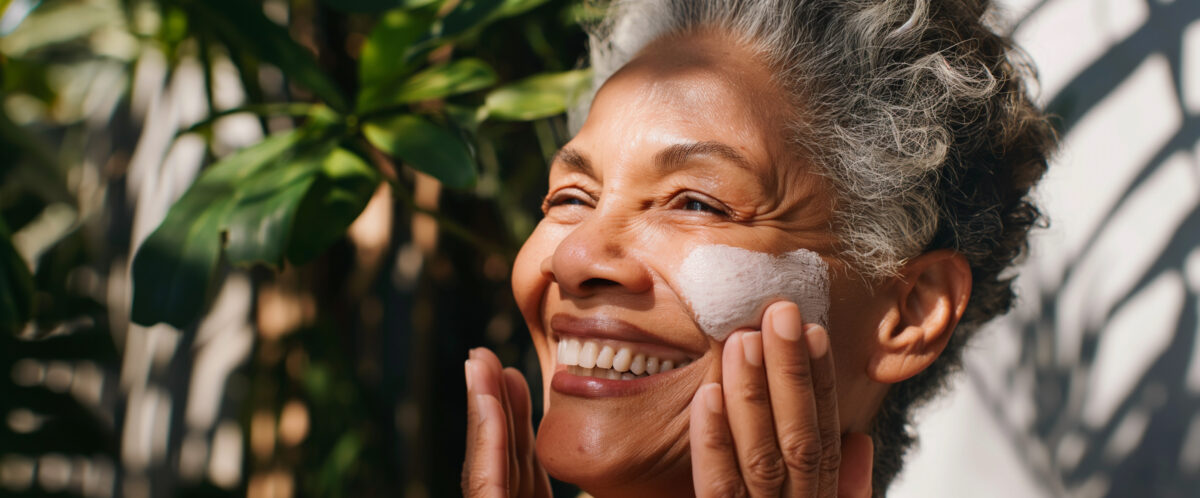
- Sunscreen should still be your god, and good cleansing and moisturizing habits are even more vital now, as your skin will be struggling to produce its own humectants and emollients.
- Since the skin gets thinner as we age, you might find it also becomes a little more sensitive, so reducing chemical exfoliation to just once or twice a week might be prudent.
- Retinol can still help support skin cell renewal, while antioxidants will continue to protect your skin from external damage.
- This is also the age when you might want to consider adding peptides to your routine, as an extra layer of reinforcement.
The Ultimate Anti-Aging Skincare Routine
Putting together an anti-aging beauty routine that will help get rid of wrinkles or at least prevent them can be an overwhelming process, especially when there are so many products and ingredients that you’ll have to include in your routine. After all, how much can you put on your face all in one day?
I break it down step by step, in a guide that isn’t written like anti-aging skin care is one-size-fits-all!
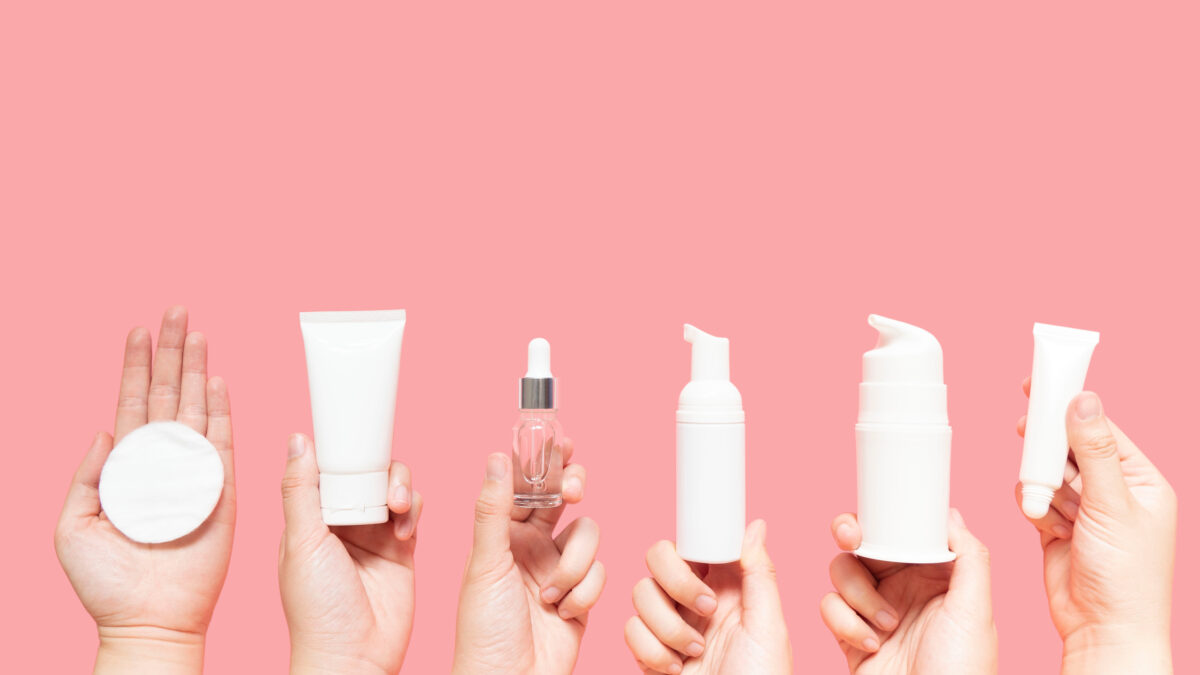
PM Routine
Step 1: Cleanse
You always want to start off by cleansing your skin, using a gentle, sulfate-free, low-pH cleanser. If you wear makeup or heavy sunscreen in the daytime, then doing a double cleanse might also be a good idea. For double cleansing, any oil or balm works as long as you follow up with a gentle cleanser.
The cleanser itself doesn’t matter as much as your technique: you want to be as gentle as possible with your skin, massaging it gently and using enough product so that it doesn’t drag. Use upwards, circular motions that will help stimulate the muscles of your face as you allow the cleanser to break down dirt, sweat, oils, and makeup.
Step 2: Tone (Optional)
A toner is a totally optional step for boosting the skin’s hydration and infusing it with some additional antioxidants and anti-inflammatories. Saturate a cotton pad with your toner, and apply it to your skin in upward motions.
If your toner comes with a spray top, simply mist it directly onto your skin. A toner with salicylic acid or alpha-hydroxy acid would actually count as an exfoliant.
Step 3: Chemical Exfoliant (Start Using 3 Times a Week, and Build up Frequency to Nightly)
Chemical exfoliants come in the form of toners, serums, pads, and even creams. They are best used immediately after cleansing or toning. Apply your chemical exfoliant to your face, and allow it to sit for 15-20 minutes before applying the next product. Those with sensitive skin should likely avoid using chemical exfoliants on a daily basis.
Step 4: Anti-Aging Serum or Essence (Optional but Highly Recommended)
This would be the best time for you to apply a serum with vitamin A or retinol, especially if there is no vitamin A in your moisturizer. If your serum does contain vitamin A, and you have sensitive skin, you might want to alternate it with the days when you use a chemical exfoliant, or you might simply not want to use it every day.
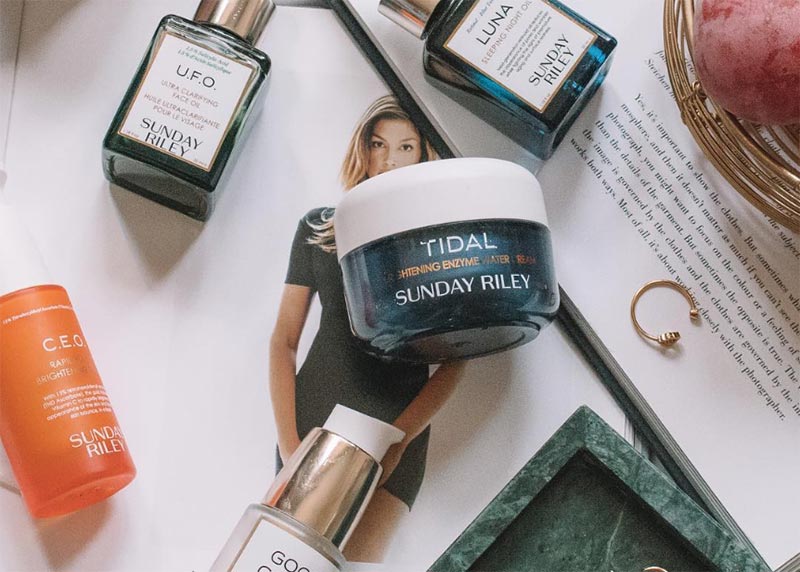
If there is already vitamin A in other parts of your routine, then any serum with humectants and antioxidants will be great! This is also your chance to infuse your skin with peptides, especially if you’re using a cream that doesn’t contain them.
There are two schools of thought for applying anti-aging serums: you can press a dime-sized amount of it into your skin gently with the pads of your hands, and then wait as it soaks in.
Alternatively, you can take another chance to massage your skin, by applying the serum with upward and outward circular motions, taking care to massage points that are prone to showing wrinkles like the area between the eyebrows and the nasolabial fold. Repeat the process for the neck and chest.
Step 5: Eye Serum or Cream (Optional)
If you have specific concerns for around your eye area, or if you prefer a dedicated product with specific ingredients or texture, the time to apply it is after your serum and before your moisturizer. You can even apply your serum around your eyes, and then lock it in with an eye cream.
To apply our eye cream, dispense a ¼ pea-sized amount and rub it between your ring fingers. With your ring fingers, gently tap the eye cream along your orbital bone, being careful not to get too close to the eye itself. Apply the eye cream both above and below the eyes.
Step 6: Anti-Aging Moisturizer with Either Antioxidants or Peptides
Applying a cream is extremely important for anti-aging, especially if you have dry skin or if you don’t use a serum/ use one that is not moisturizing enough. Your cream should include additional anti-aging ingredients that are not present in your serum. For example, if your serum only has humectants and antioxidants, you should use a moisturizer that also has peptides or vitamin A.
Once again, you will need a dime-sized amount of product for the face, and it is best applied in a gentle yet stimulating facial massage. You want your face to look glowy afterwards, but not red or irritated.
AM Routine
Step 1: Cleanse (Optional)
Some people like to cleanse their skin in the morning when they first wake up, but it’s not mandatory. For dryer skin types, rinsing your face with water only or a micellar water will prevent over-stripping your skin barrier. If you do like to cleanse, follow the same instructions as for the PM.
Step 2: Tone (Optional, Recommended If Not Cleansing)
Toning in the morning can be really nice, especially if you’re not cleansing, as a cotton pad saturated with toner will work quite well to remove the excess oils the skin might have produced in the evening.
Step 3: Serum with Vitamin C or Peptides
The morning is the best time to apply a serum that contains vitamin C, as it will boost the effect of your sunscreen. Otherwise, any serum rich in humectants and antioxidants (and maybe even peptides) will do the trick to give your skin an anti-aging dose in the mornings. Apply your serum the same way you would in the PM. Once you’ve applied your serum, give it plenty of time to sink in before moving on to the next step.
Step 4: Eye Cream or Serum (Optional)
If you prefer, you can choose to apply eye cream around your eyes in the daytime, especially if they get very dry. Apply eye cream the same way you would in the PM. Make sure to still apply sunscreen around your eyes afterwards, or opt for an eye cream with an SPF.
Step 5: Sunscreen
Whether your sunscreen comes in the form of a moisturizing cream with an SPF or as a traditional sunscreen does not really matter. It can be very difficult to combine a moisturizer with a sunscreen, so unless your skin is extremely dry chances are that just one will suffice, especially if your serum is also hydrating.
Apply at least a ¼ teaspoon of sunscreen in order to cover the whole face. If this seems like a lot, you might want to split up your application: massage an ⅛ teaspoon of sunscreen into your skin in quick yet gentle motions. Wait a few minutes for everything to sink in, and then repeat the process with another ⅛ teaspoon of sunscreen.
If you are going to be out in the sun for longer than a cumulative amount of 2 hours, then make sure to bring your sunscreen with you so you can reapply. A single application in the morning is usually enough to protect you on the way to and from work or school, unless you sit next to non-UV protected window.

Important Anti-Aging Beauty Tips
Simple lifestyle habits can also help you get rid of wrinkles and signs of premature aging, which we discuss below.
Get Lots of Sleep
For our bodies to function properly it is extremely important that we get enough sleep – this includes all functions, including skin cell, collagen, and elastin production. By sleeping enough, you can ensure that your skin is given time to repair itself.
Eat Well and Stay Hydrated
Proper nutrition is key to keeping the body working optimally. Since the skin is the largest organ, diet can certainly have some impact on it! By eating a lot of healthy fats and antioxidant-rich veggies, as well as by drinking water a lot, you can keep your skin looking great for longer.
Don’t Neglect Your Body!
People often focus all of their anti-aging skin care on their face, and up neglecting the rest of their bodies. Sometimes you’ll hear talk of not forgetting to apply creams and treatments to the neck and décolleté (just a fancy word for the chest), and even more rarely you might also hear people talk about the hands.
While these parts of the body are more visible than others, I think the whole body can benefit from the use of skin-repairing and exfoliating anti-aging skin care. The regular use of a body scrub in the shower and a rich body cream afterwards should do the trick for keeping your skin firm and supple all over.
Don’t Smoke!
Much like sun exposure, cigarette smoke can also overwhelm the skin with free radical damage. Various studies, especially on twins, have shown that regular smokers tend to look older than non-smokers due to increased extrinsic aging. The sooner you stop smoking, the more youthful your skin will look in future!
Avoid the Sun
Vampires do not age for a reason. By avoiding unnecessary exposure to the sun, you can further ensure its harmful rays do not damage your skin.
In addition to wearing sunscreen and reapplying it religiously, you can also get added protection by wearing a wide-brimmed hat and sunglasses when you’re outdoors, and avoiding the outdoors altogether around noon when the sun is highest in the sky or when the UV index is especially high.
Stay Away from Pollution
Living in cities will certainly take its toll on your skin. Pollution, especially from cars, works very similarly to cigarette smoke in that it causes additional free radical damage to the skin. Living somewhere with fresh air is not an option for most of us, but the antioxidants in your anti-aging skin care can definitely help.
A Final Note
Please be kind to yourself. When you start to learn about the various anti-aging treatments, it may seem as though each new product will be the miracle that will get rid of your wrinkles, especially because brands tend to set expectations way too high.
They add insult to injury by advertising the products with the help of celebrities who are likely seeing a dermatologist regularly, and are using fillers and injections in addition to anti-aging skincare products. Even worse, they might use models who are much younger than they are presented to be.
This often makes us forget what women are realistically supposed to look like once they hit a certain age, and in turn makes us feel inadequate, when in reality, a woman’s value has nothing to do with the amount of lines on her face.
The anti-aging skin care ritual should be a form of self-care – a way of nourishing the skin and helping it function optimally. Once we forget that and start wishing for radical changes, the skin care process can turn into self-abuse, as we start spending too much money and piling unnecessary or even harmful products on our face.
In reality the most attractive quality a woman can possess at any age is self-love, so make sure to nurture that first and foremost.

